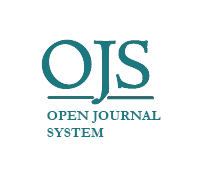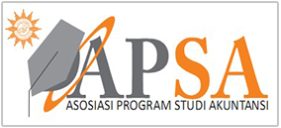The Optimization Of Employee Stock Option Plan In Achieving Financial Performance
DOI:
https://doi.org/10.22219/jrak.v11i2.17273Keywords:
Customer Capital, Financial performance, Human Capital, Stock-Based Compensation, Structural CapitalAbstract
This study aimed to examine the effects of Intellectual Capital proxied by Human Capital (HC), Structural Capital (SC), and Customer Capital (CC) on the company's financial performance. It also investigated stock-based compensation's impact through employees' stock options programs and Intellectual Capital on the company's economic performance. The research samples were 36 companies that implemented the Employee Stock Option Plans as a compensation scheme during the 2016-2019 period. There were 144 observations. The partial test used multiple regression, while the moderating variable test applied residual analysis by examining the effect of deviation from a model. As a result, this study indicated that Human Capital partially influenced its financial performance. Stock-based compensation impacts the effect of Human Capital on financial performance. The shares ownership of employees with competencies, knowledge, skills, and behavior will support organizational structures' optimization in achieving work performance. Human capital is the source of innovation and knowledge that can solve a company’s problems. The implication of this research is that information about intellectual capital (Human Capital, Structural Capital, and Employee Capital) is needed by the company to determine the effectiveness of implementing the employee stock option plan in achieving better wealth in the future.
Downloads
References
Andreeva, T. & Garanina, T. (2016). Do All Elements of Intellectual Capital Matter for Organizational Performance? Evidence from Russian Context. Journal of Intellectual Capital, 17(2), pp. 397-412. doi:10.1108/jic-07-2015-0062.
Andriana, D. (2014). Pengaruh Intellectual Capital terhadap Kinerja Keuangan Perusahaan (Studi pada Perusahaan Pertambangan dan Manufaktur yang Terdaftar di Bursa Efek Indonesia 2010-2012). Jurnal Riset Akuntansi dan Keuangan, 2 (1), pp. 251-260.
Arora, L., Kumar, S., & Verma, P. (2018). The Anatomy Sustainable Growth Rate of Indian Manufacturing Firms. Global Business Review, 19(4), pp. 1-22. https://doi.org/10.1177/0972150918773002.
Astari, R. K. & Darsono. (2020). Pengaruh Intellectual Capital terhadap Kinerja Perusahaan. Diponegoro Journal of Accounting, 9(2), pp. 1-10. https://ejournal3.undip.ac.id/index.php/accounting/article/view/27588
Asyik, N. F. (2013). The Adoption and Maintenance of Executive Stock Option Plan (ESOP): Company Characteristics Evaluation in Indonesia. Journal of Modern Accounting and Auditing, 9(5), pp. 678-689.
Batarlienė, N., Čižiūnienė, K., Vaičiūtė, K., Šapalaitė, I., & Jarašūnienė, A. (2017). The Impact of Human Resource Management on the Competitiveness of Transport Companies. Procedia Engineering, 187, pp. 110–116. https://doi.org/https://doi.org/10.1016/j.proeng.2017.04.356.
Bontis, N., Ciambotti, M., Palazzi, F. & Sgro, F. (2018). Intellectual Capital and Financial Performance in Social Cooperative Enterprise. Journal of Intellectual Capital, 19(4), pp. 712-731. https://doi.org/10.1108/JIC-03-2017-0049.
Boshkoska, M. (2014). The Agency Problem: Measures for Its Overcoming. International Journal of Business and Management, 10(1), doi:10.5539/ijbm.v10n1p204.
Cardon, P. W., Huang, Y., & Power, G. (2019). Leadership Communication on Internal Digital Platforms, Emotional Capital, and Corporate Performance: The Case for Leader-Centric Listening. International Journal of Business Communication. https://doi.org/10.1177/2329488419828808.
Castro, G. M., Díez-vial, I., & Delgado-verde, M. (2019). Intellectual Capital and The Firm: Evolution and Research Trends. Journal of Intellectual Capital, 20(4), pp. 555–580. https://doi.org/10.1108/JIC-12-2018-0221.
Damayanti, A. P., Susilaningsih, & Sumaryati, S. (2013). Pengaruh Kompensasi dan Motivasi Kerja terhadap Kinerja Karyawan Perusahaan Daerah Air Minum (PDAM) Surakarta. Jupe UNS, 2(1), pp. 155–168.
Dzenopoljac, V., Yaacoub, C., Elkanj, N., & Bontis, N. (2017). Impact of Intellectual Capital in Corporate Performance: Evidence from the Arab Region. Journal of Intellectual Capital, 18(4), pp. 884-903. doi:10.1108/jic-01-2017-0014.
Fang, H., Nofsinger, J. R., & Quan, J. (2015). The Effects of Employee Stock Option Plans on Operating Performance in Chinese Firms. Journal of Banking & Finance, 54, pp. 141-159. doi:10.1016/j.jbankfin.2015.01.010.
Handayani, F. & Yurniwati, Y. (2020). Analysis of the Influence of Employee Stock Ownership Program (ESOP) Application of Company Financial Performance. Jurnal Ilmiah Universitas Batanghari Jambi, 20(2), DOI 10.33087/jiubj.v20i2.978.
Kamaluddin, A. & Rahman, R. A. (2013). The Intellectual Capital Model: The Resource-Based Theory Application. International Journal of Learning and Intellectual Capital, 10, pp. 294–313. https://doi.org/10.1504/IJLIC.2013.057427.
Laudya, R. & Handoko, J. (2019). The Effect of Employee Stock Option Plan on Market Performance with Firm Performance as Intervening Variable. Jurnal Akademi Akuntansi (JAA), 2(2), pp. 13-39.
Mahaputra, I. N. K. A., Wiagustini, N. L. P., Yadnyana, I. K., & Artini, N. L. G. S. (2021). Organization Behavior, Intellectual Capital, and Performance: A Case Study of Microfinance Institutions in Indonesia. Journal of Asian Finance, Economics and Business, 8(4), pp. 549–561. https://doi.org/10.13106/jafeb.2021.vol8.no4.0549.
Maharani, N. B. & Faisal. (2019). Modal Intelektual dan Kinerja Keuangan Perusahaan. Jurnal Reviu Akuntansi dan Keuangan, 9(1), pp. 13-23. DOI: 10.22219/jrak.v9i1.40.
Mention, A. L., & Bontis, N. (2013). Intellectual Capital and Performance within the Banking Sector of Luxembourg and Belgium. Journal of Intellectual Capital, 14(2), pp. 286–309. DOI 10.1108/14691931311323896.
Montaseb, M. M., Ragheb, M. A., Ragab, A. A., & Elsamadicy, A. M. (2018). The Effect of Outsourcing Strategy on SME’s Performance: An Empirical Study of Internet Services Providers in Egypt. The Business and Management Review, 9(3), pp. 256-266.
Owais, W. O. (2021). The Relationship between Intellectual Capital and Accounting Conservatism: A Case Study in Jordan. Journal of Asian Finance, Economics and Business, 8(4), 735–740. https://doi.org/10.13106/jafeb.2021.vol8.no4.0735.
Ozkan, N., Cakan, S., & Kayacan, M. (2017). Intellectual Capital and Financial Performance: A Study of the Turkish Banking Sector. Borsa Istanbul Review, 17(3), pp. 190–198. https://doi.org/https://doi.org/10.1016/j.bir.2016.03.001.
Pal, K., & Soriya, S. (2012). IC Performance of Indian Pharmaceutical and Textile Industry. Journal of Intellectual Capital, 13(1), pp. 120–137. https://doi.org/10.1108/14691931211196240.
Pramathana, B. and Widarjo, W. (2020). The Effect of Intellectual Capital Performance On The Company's Financial Performance. Jurnal Reviu Akuntansi dan Keuangan, 10(3), pp. 497-508. DOI: 10.22219/jrak.v10i3.13273.
Rachmawati, S. (2020). Moderating Effect of Profitability on Intellectual Capital and Real Earnings Management. The Accounting Journal of BINANIAGA, 5(1), pp. 33-44.
Ramchandani, S. B. & Pandya, H. B. (2019). Evaluating the Effect of Employee Stock Option Plans on the Financial Performance of Indian Construction & Infrastructure Companies. International Journal of Engineering and Management ResearchI, 9(4), pp. 17-24. DOI: https://doi.org/10.31033/ijemr.9.4.4.
Ray, K.K. (2016). Employee Stock Option Plan and Firm Performance: A Quantile Regression Approach. Asian Economic and Social Society, 6(6), pp. 152-166. http://www.aessweb.com/journals/5004 DOI: 10.18488/journal.1007/2016.6.6/1007.6.152.166
Sardo, F., Serrasqueiro, Z., & Alves, H. (2018). On the Relationship between Intellectual Capital and Financial Performance: A Panel Data Analysis on SME hotels. International Journal of Hospitality Management, 75(March), pp. 67–74. https://doi.org/10.1016/j.ijhm.2018.03.001
Sarea, A. & Alansari, S. (2016). The Relationship between Intellectual Capital and Earnings Quality: Evidence from Listed Firms in Bahrain Bourse. International Journal of Learning and Intellectual CapitalI, 13(4), pp. 302-315. DOI: 10.1504/IJLIC.2016.079350.
Silvia, L. & Maftukhah, I. (2018). The Effect of Intellectual Capital on the Profitability of the Banking Companies Listed on Indonesia Stock Exchange in 2013- 2016. Management Analysis Journal, 7(3), pp. 393-399.
Sudarno, Priyono, & Sukmaningrum, D. (2016). Effect of Compensation, Motivation and Organizational Climate on Employee Satisfaction: Study on PT. Sumber Alfaria Trijaya Tbk. in Gedangan-Sidoarjo. International Journal of Business and Management, 11(2), pp. 212-220.
Sugiyono. (2011). Metode Penelitian Kuantitatif, Kualitatif dan R&D. Bandung: Afabeta.
Syariati, N. E., Subroto, B., & Andayani, W. (2018). The Role of Employee Stock Option Plan to Reduce Earnings Management Actions. Jurnal Keuangan dan Perbankan, 21(3), 425-435. DOI: https://doi.org/10.26905/jkdp.v21i3.1281.
Thakolwiroj, C., & Sithipolvanichgul, J. (2021). Board Characteristics and Capital Structure: Evidence from Thai Listed Companies. The Journal of Asian Finance, Economics and Business, 8(2), pp. 861–872. https://doi.org/10.13106/jafeb.2021.vol8.no2.0861.
Vazifehdoust, H., Taleghani, M., Esmaeilpour, F., Nazari, K., & Khadang, M. (2013). Purchasing Green to Become Greener: Factors Influence Consumers’ Green Purchasing Behavior. Management Science Letters, 3, pp. 2489–2500. https://doi.org/10.5267/j.msl.2013.08.013.
Vishnu, S., & Gupta, V. K. (2014). Intellectual Capital and Performance of Pharmaceutical Firms in India. Journal of Intellectual Capital, 15(1), pp. 83–99. https://doi.org/10.1108/JIC-04-2013-0049.
Wijayanto, A., Suhadak, Dzulkirom, M., & Nuzula, N.F. (2019). The Effect of Competitive Advantage on Financial Performance and Firm Value: Evidence from Indonesian Manufacturing Companies. Russian Journal of Agricultural and Socio-Economic Sciences, 1(85), pp. 35-44. DOI:10.18551/rjoas.2019-01.04.
Wuryani, E. (2020). Analysis Intellectual Capital of Corporate Value at Indonesia Stock Exchange. SINERGI, 10(1), pp. 46-51.
Downloads
Published
Issue
Section
License
Copyright (c) 2021 Nur Fadjrih Asyik

This work is licensed under a Creative Commons Attribution 4.0 International License.

Jurnal Reviu Akuntansi dan Keuangan is licensed under a Creative Commons Attribution-NonCommercial-ShareAlike 4.0 International License.
Authors who publish with this journal agree to the following terms:
- Authors retain copyright and grant the journal right of first publication with the work simultaneously licensed under a Creative Commons Attribution-NonCommercial-ShareAlike 4.0 International License that allows others to share the work with an acknowledgement of the work's authorship and initial publication in this journal.
- Authors are able to enter into separate, additional contractual arrangements for the non-exclusive distribution of the journal's published version of the work (e.g., post it to an institutional repository or publish it in a book), with an acknowledgement of its initial publication in this journal.
- Authors are permitted and encouraged to post their work online (e.g., in institutional repositories or on their website) prior to and during the submission process, as it can lead to productive exchanges, as well as earlier and greater citation of published work (See The Effect of Open Access).










